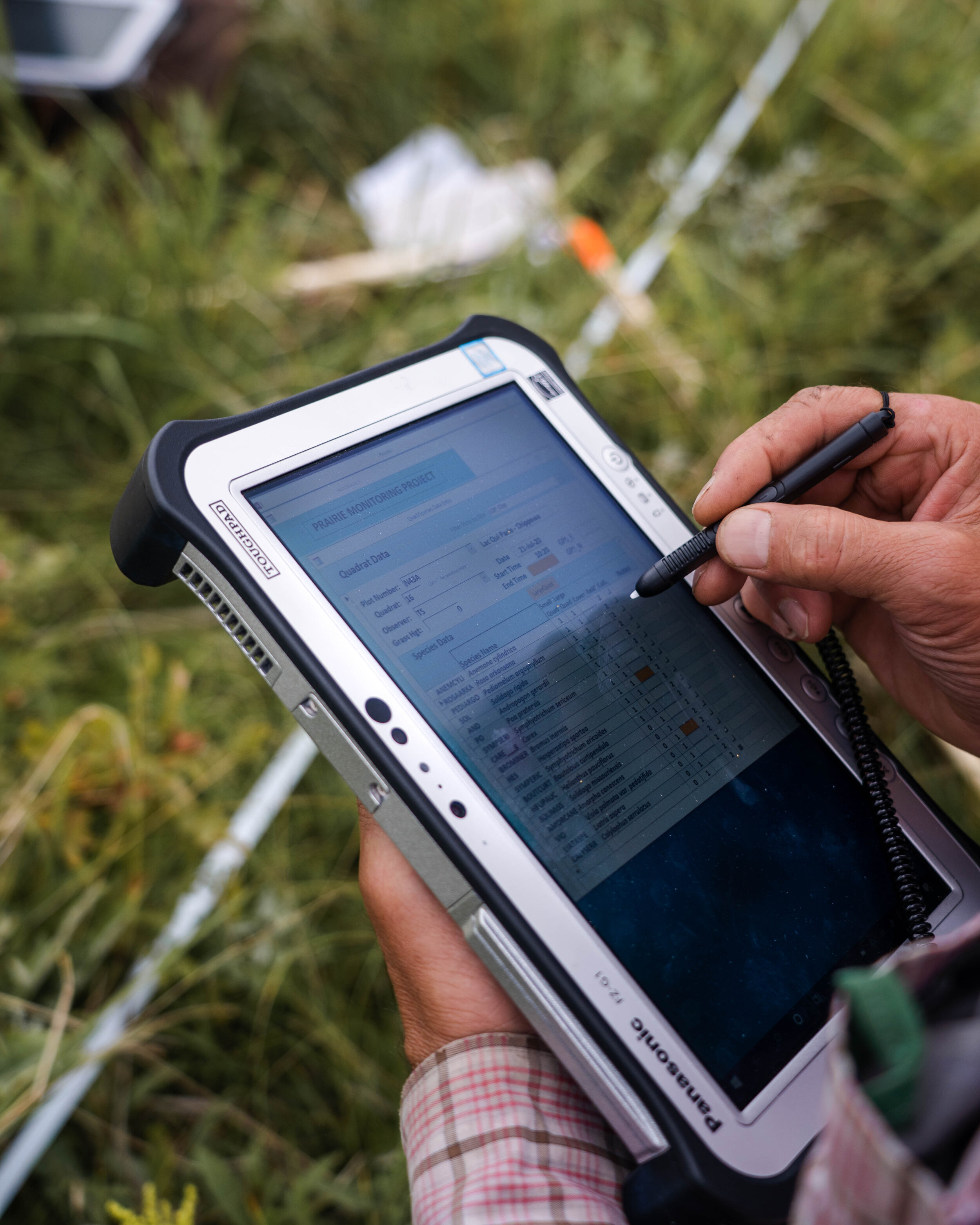Drone Services
Drone technology offers new and improved management options for land managers and restoration practitioners. From high resolution aerial imagery to point-specific accuracy in herbicide applications, drones have the power to make land management safer, more effective, and more cost efficient.
Our UAVs (unmanned aerial vehicles) are equipped with the tools to do a lot more than it seems at first glance! Our operators are FAA-certified and follow all state and federal regulations. We have the tools you need to get started with drones!
Advantages of Drones
Provide access to hard-to-reach areas such as remote landscapes or steep terrain.
Allow management and monitoring in ecologically sensitive areas without causing added disturbance.
Bird’s-eye-view of landscapes with multi-spectral sensors and thermal imagery for better site planning and improved monitoring.
Decrease costs associated with field work and monitoring.
Decrease time-to-completion of management activities.
Decreased exposure to herbicide for field staff.
Aerial Imagery & Sensing
Monitoring project progress and results is a vital step in the restoration process. Accurate ‘before’ and ‘after’ assessments are critical to conservation planning and long-term management. Using drone technology, we can record high resolution aerial imagery to track project progress from start to finish. Additionally, a variety of sensors allow us to track ecological parameters such as invasive species introduction, plant growth, and erosion control. Traditional data collection can be labor and time intensive. Drones can cover difficult areas quickly, gathering real-time data. This allows land managers to quickly adapt decision-making to success and challenges in management and restoration.
High resolution aerial imagery
Accurate property and landscape maps
Multi-spectral sensors for tracking environmental site conditions.
Thermal imagery for locating wildlife.
Real-time monitoring data for making adaptive management decisions.
Herbicide Application
Our drone operators are able to apply herbicide to large areas in less time than it would take a ground crew with traditional equipment. With precision targeting and the ability to maintain a constant height, drones can apply herbicide extremely accurately. We can adjust droplet size as needed to cover fine to course applications, and advanced mapping dials drones into specific boundaries. All these features allow drones to treat large areas or difficult to reach areas while significantly reducing herbicide drift and overspray. Utilizing drones also prevents the need to bring large equipment such as boom sprayers into a site, eliminating the risk of soil compaction, rutting, or other ground disturbance. Finally, since the operators are outside of the active treatment area, using drones for herbicide application can help keep field practitioners safe from overexposure.
Broadcast Seeding
Have a large area to broadcast seed? Need seeding somewhere inaccessible to traditional broadcast equipment? Want to put down cover crop? Drones can be the solution! We provide broadcast seeding services with our drones. Our UAV equipment can be calibrated to precise seeding rates that you can be sure will stay consistent the entire seeding. Drones can also seed areas where ground equipment can’t reach, is too wet, or is impeded by debris such as cut stumps. Advanced mapping allows precise seeding in only the correct areas.
Prescribed Fire Safety
Prescribed fire is one of the best tools we have for habitat conservation and restoration. Conducting burns safely is vital to protecting resources and ensuring fire continues expanding as an accepted management tool. We can utilize our drones’ cameras and sprayer capabilities to provide additional monitoring and water support on large or complex fires. A drone operator can monitor burn breaks efficiently with visual and thermal cameras, and if there is an escape, drones can navigate difficult terrain to respond faster and safer.
Check Your Drone Pilots!
We’re committed to quality habitat conservation everywhere. So even if you don’t choose us for your drone needs, we still want you to succeed at meeting your management goals. This starts with having the right people on your team. We’ve noticed a few unqualified “pilots” sneaking through bidding processes. The moment a drone leaves the ground for commercial hire, the drone is operating in federal airspace and subject to all federal laws governing that airspace. When seeking bid requests from contractors, don’t leave yourself open to the liability of an unqualified and unlicensed contractor! Check your pilots!
Becoming a fully licensed and certified UAV Commercial Pilot for Aerial Application is a complex and lengthy process. Here are some things to ask for on bids to make sure you’re only getting fully qualified FAA UAV Commercial Pilots.
FAA Part 107 – Drone License
FAA Part 137 – Aerial Applicators License
Section 44807 – Heavy Drone Exemption
Drone registration with the FAA
Drone registration with the State
Each Pilot has the appropriate state pesticide applicator’s license for aerial application
Each Pilot has their FAA 2nd Class Medical Certificate
NRP Pilots are fully qualified to state and FAA standards. Reach out if you have questions about ensuring FAA qualifications for your drone contractors!











